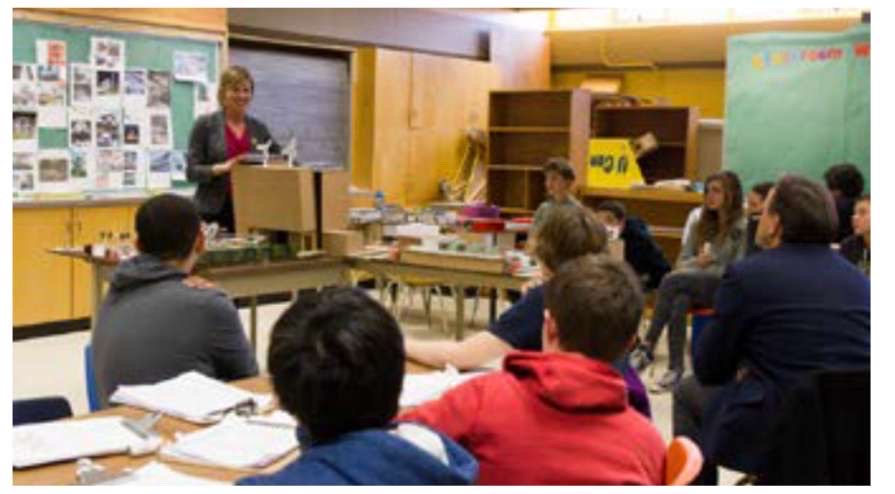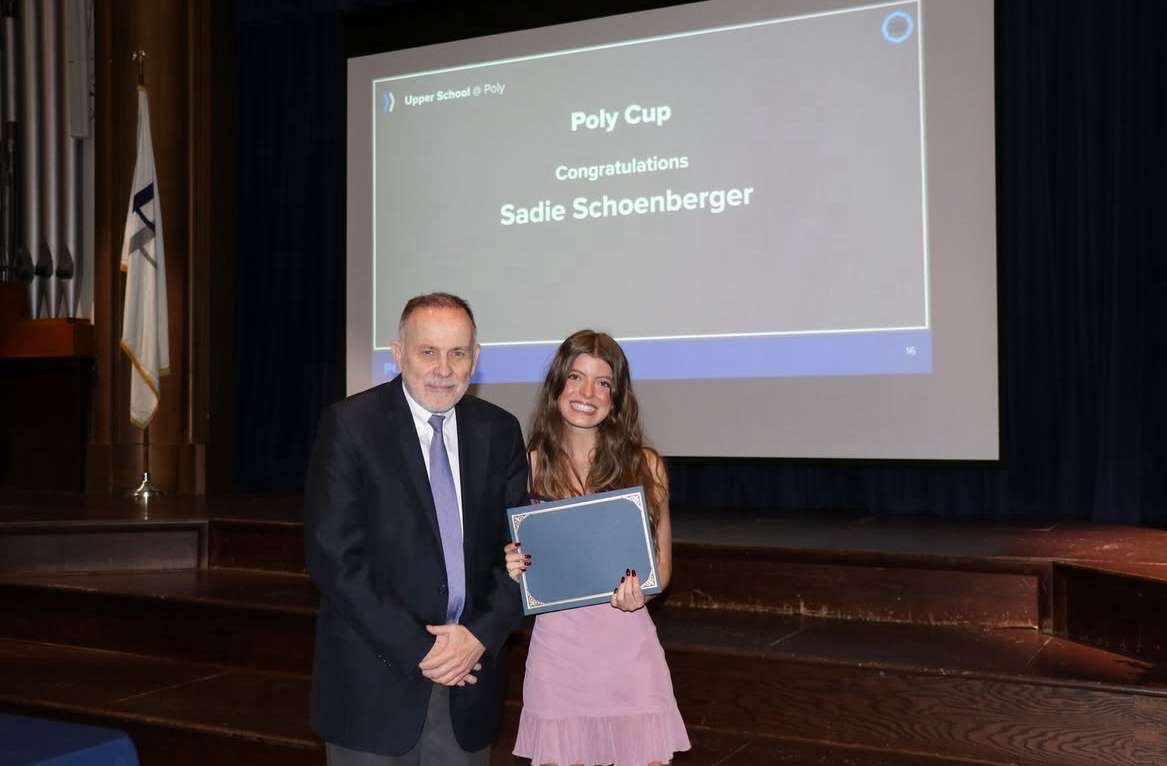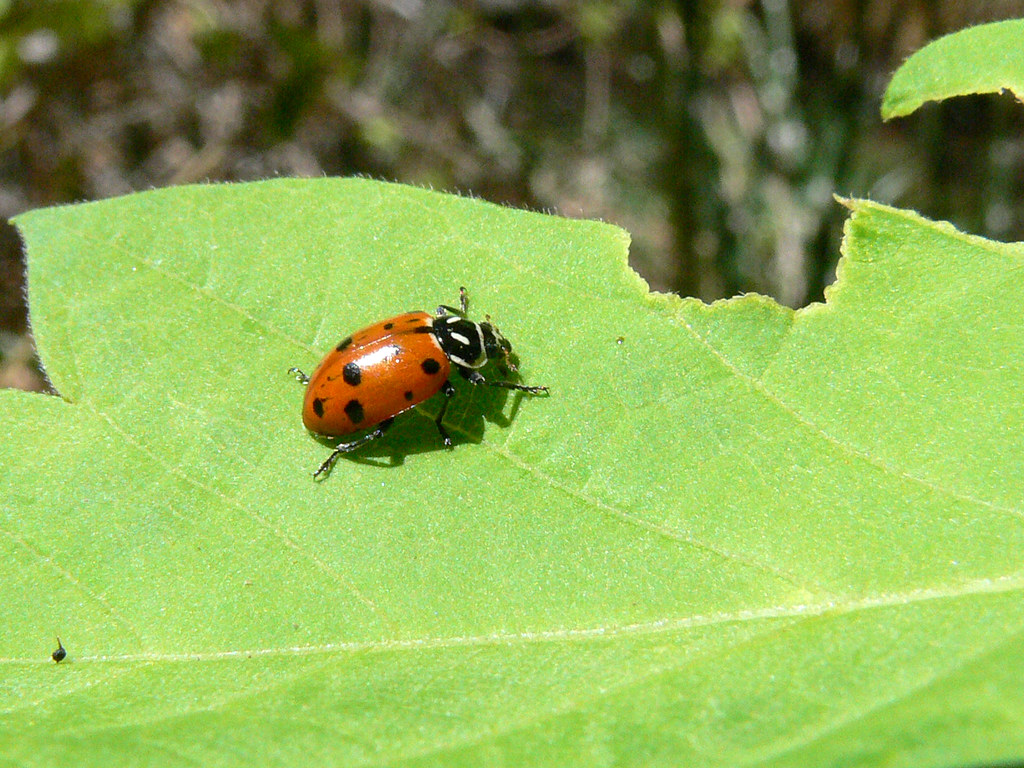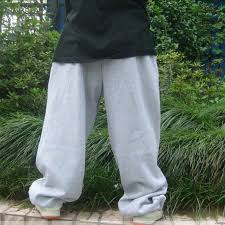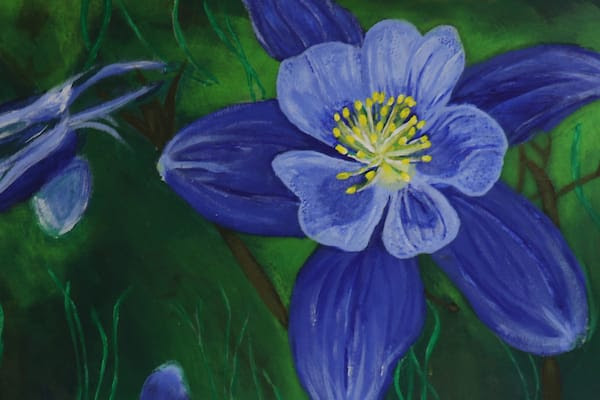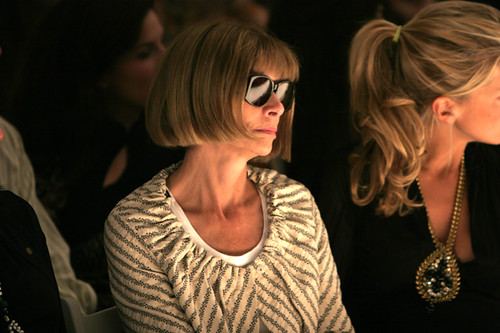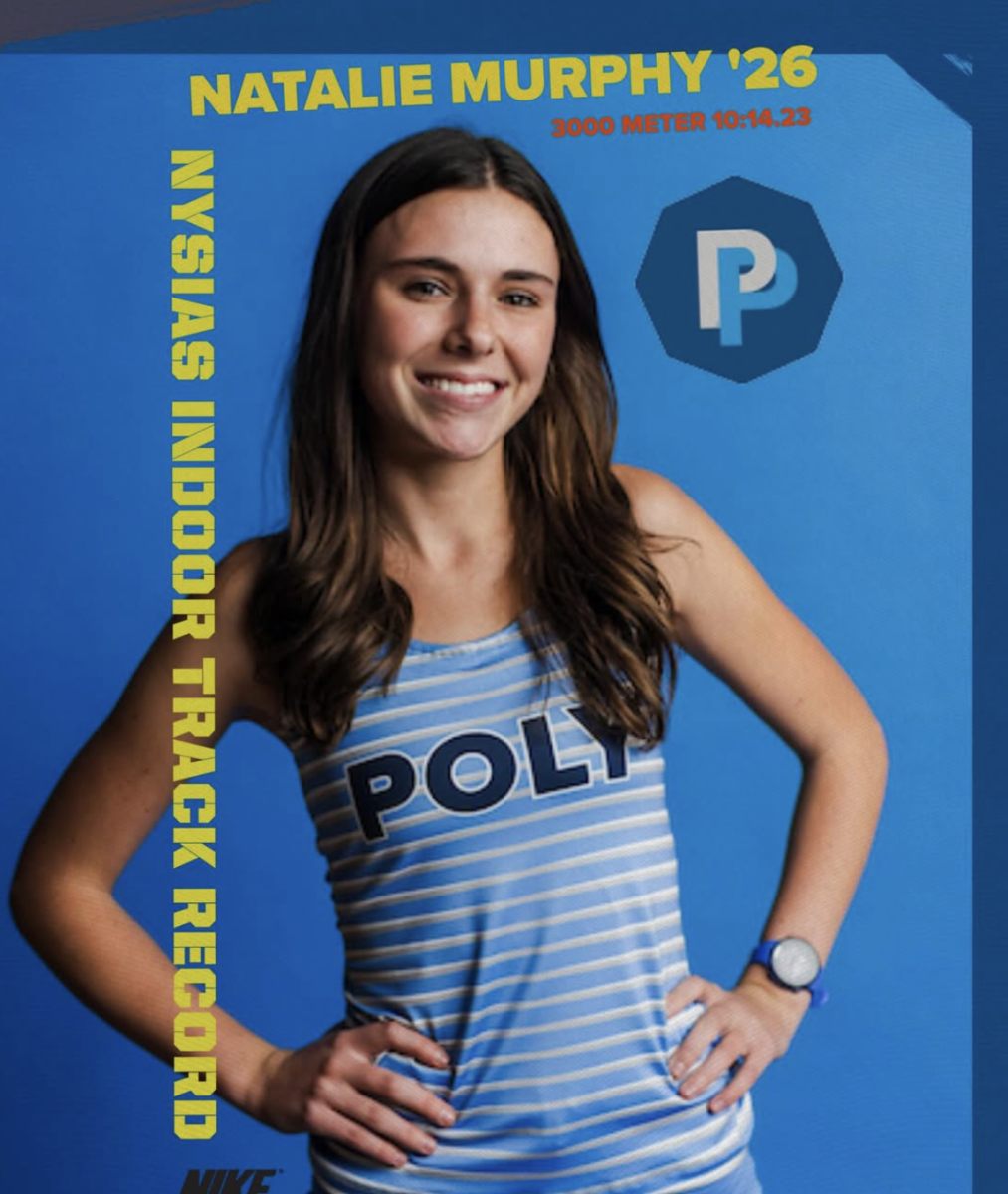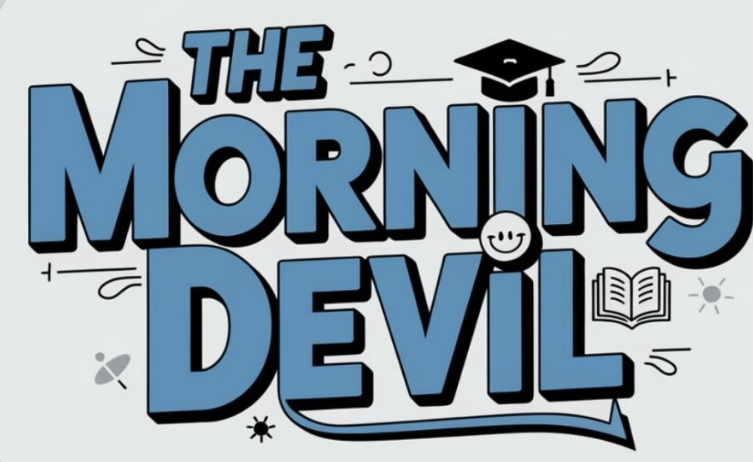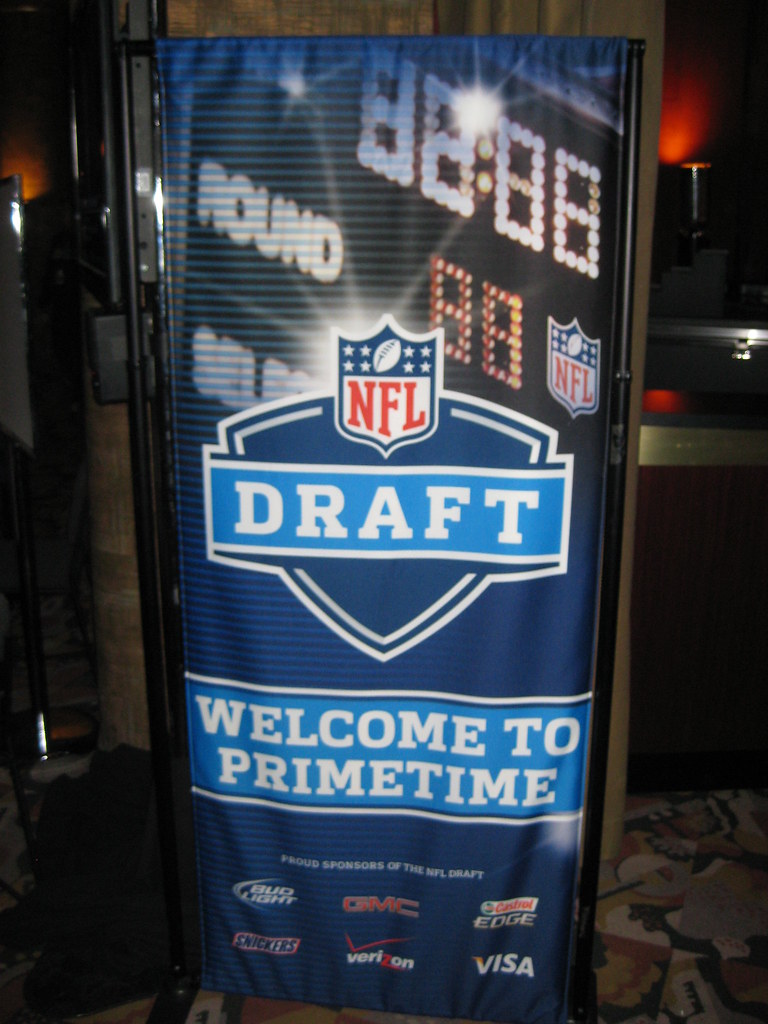I looked around the dressing room and admired the rack of costumes waiting for their chance on stage, the spools of thread in every color, the box of colorful buttons, and the pile of work-in-progress accessories laid on Poly’s Costume Designer, Kim Griffin’s desk. As we talked, Griffin tucked her mid-length auburn hair into a small bun, leaving her short bangs out as a platform for her vintage cat-eye glasses to sit on her head, waiting to be of use.
The Poly Prep dressing room has been Griffin’s workspace for the past three years. Apart from Poly’s productions, such as The Prom, Comedy of Errors, and Antigonick, to name a few, Griffin has had hundreds of unique experiences within the theater fashion industry.
Griffin studied fashion in college and wanted an opportunity in the fashion world; however, it was challenging to find a job where she could have the freedom to design while also gaining new opportunities. After a turbulent experience at her first job, she spontaneously decided to pack up her life in her hometown and “run off with the circus… It was the most spontaneous decision I made in my life,” says Griffin.
After graduating from Baylor University in Waco, Texas with a major in costume design, Griffin returned to her hometown of Houston, Texas. “I worked with high schools, middle schools, elementary schools, but also with regional theaters in Texas and around the country, in TV and film, just trying to ‘get my feet wet’ in a bunch of different things.”According to her website, her first job in fashion was working for Performing Arts Supply Co., a costume rental company. Griffin had been designing for this company for over a year when internal conflicts within her company compelled her to look for other opportunities within the fashion world.
When a mother of a child with terminal cancer approached the company to inquire about any costume donations, Griffin’s boss refused because of the lack of profit. “He wanted to make money,” she said, “and obviously, that left a very sour taste in my mouth.” So that week, she began looking for a new job.
It was challenging to find a job in the fashion industry that would enrich Griffin’s new resume and align with her morals. It wasn’t long before she came across a listing for Ringling Brothers and Barnum & Bailey to be a dresser– someone who helps dress and quick-change performers. With encouragement from a friend who had just left the rental company and recently joined the circus, she sent in her resume.
Ringling Brothers and Barnum & Bailey replied quickly and offered her an interview that went very well, but there was no follow-up. “Complete silence, nothing from the circus for weeks,” she recalls. Disappointed, she continued to search and apply for other jobs.
One month later, Griffin got a call. The circus wanted to hire her and needed her in Chicago, ready to go in two weeks. 48 hours later, she quit her costume rental job with Performing Arts Supply Co., packed up her life, and sold all her worldly possessions to get ready to travel across the country with the circus. “I was able to put everything I owned in two suitcases and a backpack, and then I flew to Chicago,” Griffin said.
Griffin realized the journey she had embarked on only a few days into her job. It was Thanksgiving, and she had made her way to Pie Car. The Pie Car was the only dining car out of the 61 sleek silver train cars marked with bold, white words that read Ringling Bros. Barnum & Bailey. In that dining car, Griffin was alone with her thoughts as she ate her Thanksgiving dinner, a meal prepared in a marine-grade kitchen, according to the International Showmen’s Museum. Those thoughts manifested into the striking reality of the change she made to her life in a mere two weeks. “It was the strangest holiday I think I’ve ever had in my life, but it was so surreal. I’ve left everything I know, gotten rid of basically everything I own, and now I’m living on a train in Chicago,” she said with a smile.
Griffin spent the next two years on the road, learning how to adapt and work with the changes and challenges of a circus. As a dresser, she helped with quick changes for all performers, both human and animal. She came to know the performers and the animals became comfortable with her presence.
One of the first things Griffin did in the circus was a quick change involving an elephant because she had previous experience working with other animals. These highly trained mammals were taught to be extremely cautious around children to keep both parties safe, so when they met Griffin at her height of 5 feet and 2 inches, the elephants had to be taught that she was not a child. So, she spent the next four weeks in the elephant section, taking any opportunity to become familiar with the elephants until they were comfortable enough to be quick-changed.“That was one of the weirdest and funniest wake-up calls on one of my first shows,” Griffin says as she chuckles.
Being head seamstress came with many challenges. Some of these included keeping the costumes in their original condition, dealing with the lack of proper resources on the road, and creating durable costumes. These challenges became opportunities for Griffin to sharpen her sewing skills.
Griffin says, “As per contract, the costumes had to look exactly like it went out at the beginning of the tour because we would be held liable as it doesn’t look like the original design.” Also, the costumes were one of a kind, as the circus had limited duplicates as a backup. “It’s not like Broadway, where you make two or three copies of the same dress, just in case something happens” and because of this, Griffin learned to be adaptable and managed to recreate brand new costumes no matter where they were. “When something got destroyed, I would remake it on the road; that was part of my job,” she explained.
It was the circus’ opening night in a new city, and anticipation filled the air. Backstage in a small hallway, past the illuminating lights and the irresistible smell of popcorn and cotton candy, Griffin was wrestling her opponent: a spandex material she was making into an entirely new costume. It was challenging enough to hunt down the materials to make this thousand-dollar outfit on the road, but now she had to make it without the proper materials. The laughter and excitement of the crowd outside silenced the vibrating sound of her sewing machine against the table. As she reached for another button from her wardrobe box, she contemplated how odd her situation was. The circus taught her how to work in these unique conditions, so she continued sewing, hemming, and stitching among clowns, animals, and performers. Before she knew it, her two-year contract was over.
Griffin decided to leave the circus to pursue more creative opportunities and continue her education in the fashion industry. The effects of her work in the circus can be seen in Griffin’s work to this day. Madeline Gross, a junior at Poly Prep, has worked with Griffin on over 11 Poly performances and sees Griffin’s circus influence firsthand. “I think that there are aspects of her circus experience within her works,” she says. “And I think that was very clear in Comedy of Errors.” As she laughs, Gross references Griffin’s bold and colorful style that shined under the show’s theme of “Barbie Hawaiian Beach Circus.”
Today, Griffin is working on various projects, including costumes for theater and couture runway shows. Her time in the circus shaped her approach to all the challenges in the fashion world and also helped her mentality to adapt. She implements the work ethic of the circus industry into all her jobs and also gains opportunities from her experience in the circus.“ There are lots of things that I learned while working in the circus that I keep in mind to this day.” She says as she nostalgically looks at the wall behind me. “It was one of the quickest decisions I’ve probably ever made in my life. But I’m glad I did it.” She smiled as she leaned back in her chair.



